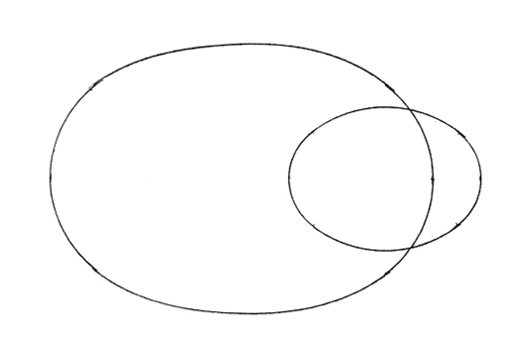AST 307 · Introductory Astronomy
|
Fall 2003
|
AST 307
Homework #7
Due Friday October 24
- I have drawn below the paths of two stars in the sky as they orbit
around each other. On my drawing 1 inch represents 1 arcsecond.
The stars have a parallax of 0.2 arcsec. The period of their orbit is
25 years. What is the mass of each star?

Print for correct scale
- For each four protons fused to make a helium nucleus inside the Sun
4.8x10^-29 kg of mass is destroyed.
a) How much energy is generated by the fusion of four protons?
b) Look up the luminosity of the Sun. From this and your answer to part
a, calculate how many protons are destroyed inside of the Sun each second.
c) Assuming that 70% of the mass of the Sun is made of protons, calculate
how many protons there are inside of the Sun. (Actually, this is the
number of protons there were inside of the Sun when it formed.)
d) Combine your answers to parts b and c to calculate how long it would
take to destroy all of the protons in the Sun.
The Sun will actually become a red giant after living about 1/10 this time,
when about 1/10 of its protons have been made into helium nuclei, and it is
nearly 1/2 of the way done doing this now.
- Sirius has a mass of about 2 solar masses and a luminosity of about
20 solar luminosities, and like the Sun is fusing hydrogen to make helium.
a) How does the number of protons inside of Sirius compare to the number
inside of the Sun? (That is, what is the ratio of these two numbers?)
b) How does the number of protons made into helium nuclei each second
inside of Sirius compare to that number for the Sun?
c) How does the expected lifetime of Sirius compare to that of the Sun?
d) What is the expected (main sequence) lifetime of Sirius?
e) What does this say about the likelihood of intelligent life forming
on a planet orbiting around a 2 solar mass star?
|